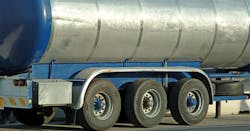Region VI of the Occupational Safety and Health Administration (OSHA) has created a new Regional Emphasis Program designed to target workers’ exposure to hazards arising from the cleaning of transportation tanks. OSHA Region VI includes the states of Texas, Oklahoma, Louisiana and Arkansas.
The agency said over the last five years it has investigated the deaths of 36 workers in the transportation and tank cleaning industry in the Dallas region—and over the last year alone, four lives were lost. Grimly, OSHA reports that both the workers who had entered these tanks to clean them, and their would-be rescuers, are among the total number of fatalities.
A worker cleaning the inside of a tank trailer in Pasadena, TX, in December 2019 fell victim to hazardous vapors, as did a co-worker who attempted rescue. Months later, in August 2020, two cleaning workers entered a natural gas tanker on a railcar in Hugo, OK, and fell victim to its vapors.
“As was the case in Pasadena and Hugo, failing to follow confined space entry permit requirements and take required steps to prevent workers from inhaling harmful substances can lead to fatal outcomes,” the OSHA Dallas regional office pointed out.
The agency said the program is intended to raise awareness among employers in industries typically engaged in tank cleaning activities, including trucking, rail and road transportation, remediation services, material recovery, and waste management services.
Transportation tanks on trucks, trailers and railcars require cleaning and inspection before they are refilled for transport. Workers who clean these tanks between uses risk exposure to toxic vapors from chemicals, decaying crops, waste and other substances, and to asphyxiation, fires and explosions, OSHA explains.
“Too often, employers allow workers to enter tanks without testing atmospheric conditions, completing confined space entry permits, or providing adequate respiratory protection,” says OSHA Regional Administrator Eric S. Harbin. “Companies with active safety and health programs that train workers to identify hazardous conditions and use required protective measures can prevent serious and fatal injuries.”
The initial phase of this regional emphasis program includes outreach through mailings to employers, professional associations, local safety councils, apprenticeship programs, local hospitals and occupational health clinics, and presentations by OSHA professionals to industry organizations and stakeholders.
Following the three-month outreach, the program empowers OSHA to schedule and inspect targeted industries in Texas, Oklahoma, Arkansas and Louisiana.
OSHA said it encourages employers to take steps to identify, reduce and eliminate hazards related to confined spaces and tank cleaning. Employers can also request OSHA’s free on-site consultation services to help them implement confined space safety strategies and ensure compliance with agency standards.
“Regardless of the Regional Emphasis Program, all employers should evaluate whether they have any confined spaces or permit-controlled confined spaces and, if they do, make sure that they have a confined space entry program that complies with OSHA regulations,” recommends attorney E. Phileda Tennant of the law firm of Vinson & Elkins.
“If your company contracts with an outside entity in order to obtain tank cleaning services, it is crucial to ensure that those companies do the same and comply with OSHA requirements related to entry into permit-required confined spaces,” Tennant says.
Asphyxiation is a critical hazard associated with tank cleaning activities, she reminds employers. “When a worker enters a tank between uses in order to clean it, they risk exposure to toxic vapors from chemicals, decaying crops, or whatever other substance was in the tank.”
Asphyxiation is, however, not the only hazard, Tennant notes. Apart from engulfing workers with fumes, these substances also can cause explosions or fires.
Due to these hazards, a tank may qualify as a “permit-required” confined space under OSHA regulations, depending on the chemical makeup of the substances being transported, cleaning method, tank configuration, and other factors. “Perhaps obviously, workers must have a permit in order to enter a permit-required confined space,” she says.
They must also be trained on its potential hazards, Tennant adds. OSHA regulations set forth myriad requirements for work in these confined spaces, including regarding the identification of hazards, procedures for entering and exiting the spaces, monitoring for hazards, and the use of protective equipment.
About the Author

David Sparkman
David Sparkman is founding editor of ACWI Advance, the newsletter of the American Chain of Warehouses Inc. He also heads David Sparkman Consulting, a Washington, D.C. area public relations and communications firm. Prior to these he was director of industry relations for the International Warehouse Logistics Association. Sparkman has also been a freelance writer, specializing in logistics and freight transportation. He has served as vice president of communications for the American Moving and Storage Association, director of communications for the National Private Truck Council, and for two decades with American Trucking Associations on its weekly newspaper, Transport Topics.
